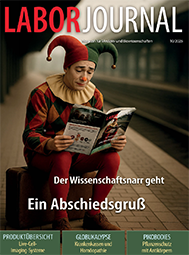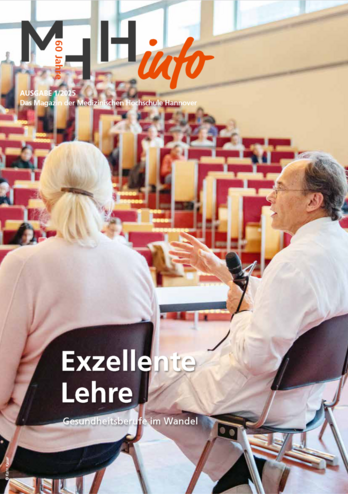Interview at "Visite"

Our director, Prof. Dr. Seifert, was interviewed about analgesic pharmacotherapy for the NDR television program "Visite".
https://www.ndr.de/fernsehen/sendungen/visite/visite,sendung-20296.html
Article in Laborjournal 10/2025

In the October issue of “Laborjournal”, Prof. Dr. Roland Seifert contributed to an article on health policy approaches to homeopathy.
BPS-Event: Shared pre-war histories of the British and German Pharmacological Societies
Three contributions from our institute
![[Translate to Englisch:] Bild zur Veranstaltung in Oxford](/fileadmin/mhh/pharmakologie/bilder/Behind-the-Photographs.jpg)
Our director Prof. Dr. Roland Seifert and his two doctoral students Nina Goebels and Hannes Schneider will be contributing to a symposium of the British Pharmacological Society in Oxford on the topic of “Shared pre-war histories of the British and German Pharmacological Societies”. The event will take place on October 3, 2025, in Oxford (UK).
Book "Medikamente - Beipackzettel leicht erklärt" in the MHH Info magazine

With her book, Hannah Warmer wants to contribute to the medication safety by explaining the package leaflets of common drugs in a way that is understandable to laypeople. Together with our Institute Director, Prof. Roland Seifert, the MHH student has written profiles of 48 drugs or drug combinations, including the most important information on their benefits and risks. These profiles are intended to help people understand the often complex package leaflets. A book report can be found on page 10 of the current issue of MHH Info, the medical school's information magazine.
Latest Publications
Wafai G, Seifert R. Drug advertisements in daily newspapers: a case study with the Hannoversche Allgemeine Zeitung (Hannover General Newspaper). Naunyn Schmiedebergs Arch Pharmacol. 2025 Mar 21. doi: 10.1007/s00210-025-04015-z. Epub ahead of print.
Halling T, Mambrey V, Steinert JM, Seifert R, Dreher A, Marazia C, Loerbroks A, Hansson N. The Gender Award Gap in German medical societies 2000-2023: the Fritz-Külz-Award as an example. Naunyn Schmiedebergs Arch Pharmacol. 2025 Mar 6. doi: 10.1007/s00210-025-03892-8. Epub ahead of print.
Bargsten FE, Seifert R. Devil's claw (Harpagophytum procumbens): is the buzz in Google justified? Naunyn Schmiedebergs Arch Pharmacol. 2025 Mar 5. doi: 10.1007/s00210-025-03974-7. Epub ahead of print.
Bindel LJ, Seifert R. Long-term forecasting and evaluation of medicine consumption for the ATC class H with a focus on thyroid hormones in OECD countries using ARIMA models. Naunyn Schmiedebergs Arch Pharmacol. 2025 Mar 3. doi: 10.1007/s00210-025-03930-5. Epub ahead of print.